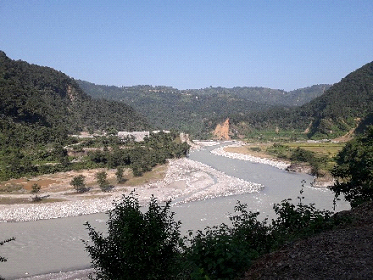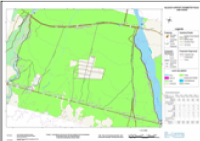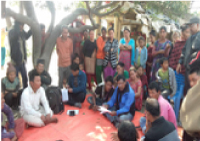


| Client: | Tanahun Hydropower Limited, Nepal Electricity Authority |
| Funding Agency: | Asian Development Bank |
| Period: | July 2019 to July 2024 |
| Consulting Association: | ELC Electroconsult S.P.A., Italy – GEOCE Consultants (P) Ltd. |
| Approx. Value of Services: | Total USD 2.848 million – ELC (US$1.73 million) and GEOCE (NRs 123 million) |
| Professional Staff Input: | International – 46 person months, National-320 person months |
Salient Details
The consultancy service is to assist the client to implement environmental and social safeguard measures related to the project and its 34 km, 220 kV transmission line project and associated rural development components in the form of the Rural Electrification Program and the Community Development Program. Tanahun Hydropower Project (TPH) is 140 MW installed capacity reservoir project with a live storage volume of 192.8×106 cubic meters. Main features of THP include
⦁ 140 m high concrete gravity dam on the Seti River with Tower Type intake
⦁ Headrace tunnel of length 1,203 m including power intake, surge shaft, steel lined
⦁ penstock shaft and tunnel, manifold and distribution pipes and draft tunnel
⦁ Underground powerhouse complex divided in power plant and transformer caverns, including two generating units, transformers, GIS equipment, high voltage cables,
⦁ auxiliary systems, main access tunnel and portal building
⦁ Tailrace tunnel and outlet
⦁ 34 km long 220 kV double circuit Transmission lines
⦁ General infrastructure including access roads.
In addition, the project includes community development plan (CDP) for people in hydropower affected area (8 rural and 1 urban municipalities) to recognize benefits from the project with long term engagement and Safeguards (environment and social).
The scope of services comprises of the followings:
⦁ Implementation of
⦁ Fish conservation management plan
⦁ Water release and river safety management plan
⦁ Wildlife conservation and awareness management plan
⦁ Watershed/Forest management plan
⦁ Monitoring of baseline condition, and of the environmental and social changes that occur in the project affected area (impact monitoring)
⦁ Monitoring of both the performance of implementation of environmental protection and social mitigation measures (performance monitoring)
⦁ Updating and implementation of
⦁ Resettlement and Indigenous People Plan
⦁ Gender equality and social inclusion (GESI) Plan
⦁ Preparation and implementation of
⦁ Community Development Plan
⦁ Rural electrification plan with focus on associated social safeguards related tasks




